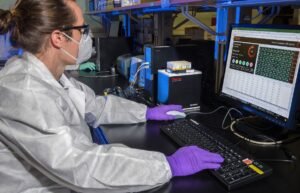Is Neuralink Bad?
The advent of Neuralink, a neurotechnology company founded by Elon Musk, has created both excitement and concern among the general public. Neuralink aims to develop implantable brain-machine interfaces that could potentially enhance human cognition and revolutionize medical treatments. While some view this technology as a groundbreaking advancement with numerous potential benefits, others raise valid concerns about the ethical and societal implications it could bring.
Key Takeaways:
- Neuralink, founded by Elon Musk, is a neurotechnology company.
- Implantable brain-machine interfaces could have significant medical and cognitive benefits.
- There are ethical and societal concerns associated with Neuralink technology.
Neuralink’s primary objective is to develop implantable brain-machine interfaces that can establish a direct communication link between the human brain and external devices. This technology holds tremendous potential for medical treatments, particularly for patients with neurological disorders or spinal cord injuries. By connecting the brain to prosthetic limbs or robotic devices, individuals could regain mobility and independence. **Such advancements could dramatically improve their quality of life and restore lost functions.**
However, the introduction of an implantable brain-machine interface raises numerous ethical questions. One concern pertains to privacy and data security. As Neuralink’s technology involves the collection and processing of neural data, it raises concerns about who will have access to this personal information and how it will be used. *Ensuring data privacy protections and establishing secure protocols will be essential for widespread adoption.*
| Concerns | Benefits |
|---|---|
| Privacy and data security | Improved medical treatments |
| Long-term effects on brain health | Enhanced cognitive capabilities |
| Equity and accessibility | Improved quality of life for patients |
Another concern is the potential long-term effects that implantable brain-machine interfaces could have on brain health. Critics argue that the long-term consequences of such technology on neural tissue and brain function remain largely unknown, and caution must be exercised before widespread implementation. *Extensive research and rigorous testing are necessary to address these concerns and minimize any adverse effects.*
Equity and accessibility are also significant concerns surrounding Neuralink. If the technology is limited to a select few who can afford it, it could exacerbate existing societal inequalities. Ensuring equality of access to these technologies is essential to prevent further divisions in society. *Making implantable brain-machine interfaces affordable and accessible to all segments of the population will be a crucial consideration for their ethical implementation.*
Data Comparison:
| Pros | Cons | |
|---|---|---|
| Benefits | Improved medical treatments | Potential long-term effects |
| Concerns | Enhanced cognitive capabilities | Privacy and data security |
In conclusion, Neuralink’s implantable brain-machine interfaces offer significant potential for medical treatments and enhanced cognitive capabilities. However, it is essential to address the ethical concerns regarding privacy, data security, long-term effects on brain health, and equitable access to these technologies. *Ongoing research, careful regulation, and transparent dialogue are crucial for the responsible development and integration of Neuralink technology.*
Neuralink holds promise, but society must proceed with caution to ensure the positive impact outweighs the potential risks.

Common Misconceptions
Neuralink is a Mind Control Device
One common misconception surrounding Neuralink is that it is a mind control device. While Neuralink does involve embedding a chip in the brain, it is important to note that its purpose is not to control or manipulate thoughts or actions. Instead, Neuralink aims to enhance human brain function and address neurodegenerative diseases.
- Neuralink’s primary goal is to improve the quality of life for individuals with neurological conditions.
- The technology focuses on restoring lost motor and sensory functions, not controlling or altering the individual’s thoughts or actions.
- Neuralink operates based on voluntary and consensual participation, ensuring that the individual retains full agency and control over their own mind.
Neuralink Leads to Unethical Advancements
Another misconception is that Neuralink’s advancements in brain-machine interfaces will lead to unethical and potentially dangerous applications. While it is crucial to consider ethical implications in any technological development, the potential negative outcomes anticipated by some may not be realized or outweigh the positive possibilities.
- Neuralink’s research prioritizes ethical considerations and ensures transparency in its development and implementation processes.
- The technology can provide significant benefits in healthcare, neurorehabilitation, and cognitive augmentation, potentially improving countless lives.
- Regulatory bodies and ethical committees exist to evaluate and mitigate any potential risks associated with Neuralink’s advancements.
Neuralink Invasively Monitors Thoughts and Privacy
A misconception about Neuralink is that it invasively monitors thoughts and compromises personal privacy. However, Neuralink’s primary function is not to invade personal thoughts but to establish a better interface between the brain and external devices, contributing to medical advancements and potential breakthroughs.
- Neuralink operates based on voluntary participation and informed consent, ensuring privacy is protected and not violated.
- The focus of Neuralink’s monitoring is to enable individuals to regain lost sensory and motor functions, not to intrude upon personal thoughts or privacy.
- Strict security measures and protocols are in place to safeguard personal data and ensure privacy concerns are addressed.
Neuralink is a Threat to Human Autonomy
There is a misconception that Neuralink poses a threat to human autonomy, as it introduces technology that interacts directly with the brain. However, Neuralink’s goals align with enhancing human capabilities rather than diminishing autonomy.
- Neuralink strives to empower individuals with neurological conditions to regain their independence and improve their quality of life.
- The technology provides opportunities for individuals to regain control over their own bodies and overcome physical limitations.
- Neuralink’s development prioritizes ethical considerations and individual consent, ensuring autonomy is respected and preserved.

Overview of Neuralink’s Objectives
Neuralink, founded by Elon Musk, aims to merge artificial intelligence (AI) with the human brain to ultimately enhance human capabilities. The following table highlights some of Neuralink’s objectives and their potential impact on various aspects of our lives.
| Objective | Potential Impact |
|---|---|
| Improving memory | Enhanced learning and retention abilities |
| Alleviating mental disorders | Potential treatment for conditions like depression or anxiety |
| Restoring motor function | Hope for paralyzed individuals to regain mobility |
| Advancing AI communication | Efficient interaction between humans and AI systems |
Ethical Concerns Surrounding Neuralink
While the potential benefits of Neuralink’s technology are immense, it is essential to consider the ethical implications. The table below sheds light on some ethical concerns associated with Neuralink’s endeavors.
| Ethical Concerns | Consequences |
|---|---|
| Privacy invasion | Possible misuse of personal data extracted from brain interfaces |
| Unequal access | Technology may only be available to privileged individuals |
| Unintended consequences | Potential risks and unforeseen side effects of brain-computer interfaces |
| Loss of identity | The blurring of lines between human and machine identity |
Advantages and Disadvantages of Neuralink
Neuralink’s advancements have the potential to revolutionize various sectors. However, as with any new technology, there are both advantages and disadvantages to consider. The following table presents a balanced view of the pros and cons.
| Advantages | Disadvantages |
|---|---|
| Potential medical breakthroughs | Unpredictable long-term consequences |
| Advancement of AI integration | Threats to personal privacy and security |
| Enhanced cognitive abilities | Potential socioeconomic inequalities |
| Improved human-computer interaction | Erosion of the line between human and machine |
The Roadmap to Neuralink’s Vision
Neuralink has outlined a roadmap to achieve their vision of merging humans and AI. The following table provides a chronological overview of their projected milestones.
| Milestone | Description |
|---|---|
| Brain mapping | Accurately mapping the brain’s neural activity |
| Electrode implantation | Developing minimally invasive methods for electrode insertion |
| High-bandwidth communication | Establishing seamless communication between the brain and devices |
| Optimizing AI integration | Improving compatibility and usability of AI systems with brain interfaces |
Concerns Raised by Experts
Eminent experts in the field have voiced their concerns regarding Neuralink’s ambitions. The table below summarizes some of these concerns.
| Concerns | Expert Opinions |
|---|---|
| Ethical implications | Caution must be exercised to avoid unintended consequences |
| Regulation challenges | The need for regulatory frameworks and safeguards before implementation |
| Long-term effects | Unpredictable impacts on individuals, society, and future generations |
| Commercialization concerns | Risks associated with profit-driven motives |
Neuralink in Pop Culture
Neuralink’s groundbreaking technology has not only captivated scientists but has also found its way into popular culture. The table below showcases instances where Neuralink has influenced various forms of media.
| Aspect | Media Example |
|---|---|
| Books | Science fiction novels exploring the moral dilemmas posed by brain-computer interfaces |
| Movies | Dystopian films depicting the potential dangers and invasive nature of brain implants |
| Music | Songs and albums inspired by the fusion of humanity and AI |
| Art | Artistic representations of a future where humans and technology coexist |
Public Perception of Neuralink
Understanding public sentiment towards Neuralink is crucial to assess its acceptance and potential societal impact. The following table summarizes different public opinions surrounding Neuralink’s advancements.
| Perception | Description |
|---|---|
| Excitement and hope | Anticipation for groundbreaking advancements in health and cognitive abilities |
| Skepticism and concern | Worry about privacy, safety, and manipulation of human minds |
| Ambivalence | Indifference due to lack of understanding or personal relevance |
| Mixed reactions | Combination of optimism and apprehension towards Neuralink’s potential |
Neuralink: The Future Landscape
Neuralink holds the promise of reshaping society as we know it, blurring the lines between humans and technology. While concerns exist, the potential positive impacts on medical advancements and human potential cannot be overlooked. The path to Neuralink’s realization is both exciting and challenging, demanding conscientious decisions and public deliberation.
Frequently Asked Questions
Is Neuralink Bad?
Question 1:
What is Neuralink?
Neuralink is a neurotechnology company founded by Elon Musk that aims to develop implantable brain-machine interface devices. These devices are intended to merge human cognition with artificial intelligence.




